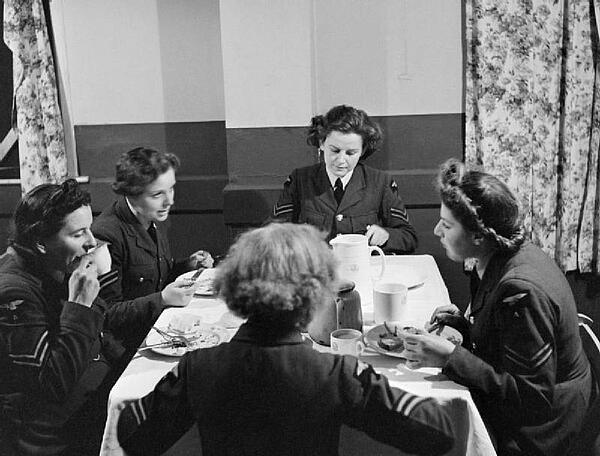Women's Auxiliary Air Force
The Women’s Auxiliary Air Force (WAAF) was formed in June 1939 when war seemed imminent. In its early years the members of the WAAF filled posts as drivers or kitchen orderlies, but as the war progress roles diversified. By the end of the war, members were involved in the interception of codes and cyphers, the interpretation of aerial photographs, the operation of balloon sites and many other important wartime jobs.
The initial function of the WAAF is laid out in a recruitment pamphlet published before the war. It identifies the main areas women would work in, including driving, clerical work, cooking, running messages and waitressing.
Women between the ages of 18 and 43 were able to join the WAAF. The ATS had 2,000 members in total.

After the success of Blitzkrieg, the government expanded the work available for the WAAF. The RAF were under huge strain as a result of the Battle of Britain, so and members of the WAAF were trained in radar plotting, photographic interpretation as well as many other important skills.
Leah McConnell was a member of the WAAF. Here she talks about her experience with maintaining barrage balloons in an interview with the BBC:
“When the call came to fly the balloons, one lady, one was always to do that job. Any one of the crew — a crew, we called them — and you run to the winch and you got in and flew your balloon 5 thousand feet. And that stayed then until you were told later on to bed them down again. And when those balloons were down on the ground again they had to be tied, because they were very light, you know. It was a nylon kind of fabric. And great big blocks, they were that size, and we had to move those and tie them to the balloon. In all hours of the night.”
Many members of the WAAF were stationed at Fighter Command air bases, which made their job particularly dangerous. Large air bases such as Hawkinge and Manston, were prime targets in the Luftwaffe’s first raids in the Battle of Britain. WAAFs had the important job of plotting the movements of Luftwaffe planes. Their work was recognised after Britain’s victory in the Battle of Britain, when many WAAFs were transferred to the Royal Observer Corps.
After 10 weeks of training, members of the WAAF could work on barrage balloon sites. Barrage balloons were used to force incoming Luftwaffe bombers to fly higher, therefore reducing the accuracy of their bombing. The work carried out by barrage balloon operators was invaluable during the Blitz.
There were 182,000 women in the Women’s Auxiliary Air Service by December 1943. However, even by the end of the war their role was met by scepticism. The media pointed out that it took 16 women to do the work of 10 men on the barrage balloon site.
See also: Women's Royal Naval Force
See also: Auxiliary Territorial Service
MLA Citation/Reference
"Women's Auxiliary Air Force". HistoryLearning.com. 2025. Web.
